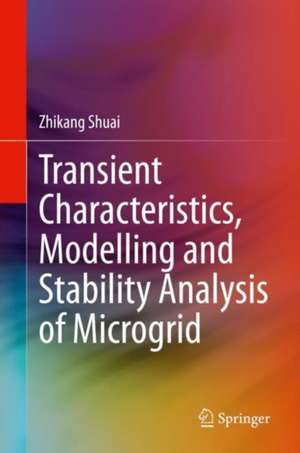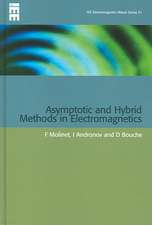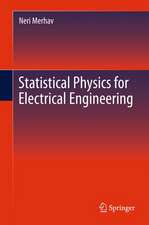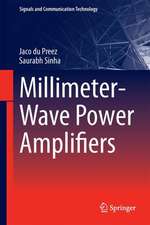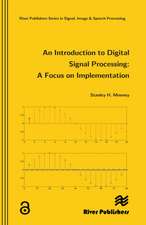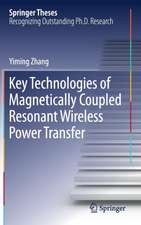Transient Characteristics, Modelling and Stability Analysis of Microgrid
Autor Zhikang Shuaien Limba Engleză Hardback – noi 2020
| Toate formatele și edițiile | Preț | Express |
|---|---|---|
| Paperback (1) | 641.20 lei 6-8 săpt. | |
| Springer Nature Singapore – 2 noi 2021 | 641.20 lei 6-8 săpt. | |
| Hardback (1) | 644.95 lei 3-5 săpt. | |
| Springer Nature Singapore – noi 2020 | 644.95 lei 3-5 săpt. |
Preț: 644.95 lei
Preț vechi: 758.77 lei
-15% Nou
Puncte Express: 967
Preț estimativ în valută:
123.47€ • 127.05$ • 104.08£
123.47€ • 127.05$ • 104.08£
Carte disponibilă
Livrare economică 08-22 februarie
Preluare comenzi: 021 569.72.76
Specificații
ISBN-13: 9789811584022
ISBN-10: 9811584028
Pagini: 290
Ilustrații: XVIII, 290 p. 217 illus., 126 illus. in color.
Dimensiuni: 155 x 235 mm
Greutate: 0.54 kg
Ediția:1st ed. 2021
Editura: Springer Nature Singapore
Colecția Springer
Locul publicării:Singapore, Singapore
ISBN-10: 9811584028
Pagini: 290
Ilustrații: XVIII, 290 p. 217 illus., 126 illus. in color.
Dimensiuni: 155 x 235 mm
Greutate: 0.54 kg
Ediția:1st ed. 2021
Editura: Springer Nature Singapore
Colecția Springer
Locul publicării:Singapore, Singapore
Cuprins
Introduction.- Transient Fault Characteristics of Current-controlled IIDGs.- Transient Fault Characteristics of Voltage-controlled IIDGs.- Fault Ride Though Strategies of Current-Controlled IIDG.- Fault Ride Though Control Methods of Voltage-Controlled IIDGs.- .- Full-order Modeling and Dynamic Stability Analysis of Microgrid.- Time-scale Model Reduction of Microgrid based on Singular Perturbation Method.- Spatial Model Reduction for Multi-Microgrid Based on Dynamic Equivalent method.- Modeling and Stability Analysis of Asymmetric Microgrid Based on Dynamic Phasor Theory.- Transient Angle Stability of Virtual Synchronous Generators Connected to Power Grid.- Transient Angle Stability of Paralleled Synchronous and Virtual Synchronous Generators System.- Re-synchronization Analysis of Virtual Synchronous Generators in Power Electronic System
Notă biografică
Dr. Shuai received the B.S. and Ph.D. degree from the College of Electrical and Information engineering, Hunan University, Changsha, China, in 2005 and 2011, respectively. He was with the Hunan University, as an Assistant Professor between 2009 and 2012, and an Associate Professor from 2012. Starting in 2014, he became a Professor at Hunan University. His research interests include Power electronics, power quality control, and micro-grid, etc. He has authored or co-authored over 120 journal and conference publications, including 46 papers in the SCI. Dr. Shuai was recipient of the 2010 National Scientific and Technological Awards of China. He is an Associate Editor of Chinese Journal of Electrical Engineering, an Associate Editor of IEEE Journal of Emerging and Selected Topics in Power Electronics, and a Guest Editor-in-Chief of Automation of Electric Power Systems.
Textul de pe ultima copertă
The book focuses on the transient modelling, stability analysis and control of power electronic systems, since these systems face severe safe operation problems the during transient period. It discusses both theoretical analysis and practical applications, highlighting the transient characteristics of converters with different control strategies, and proposes transient modelling and model reduction methods. Furthermore, it classifies the transient stability problems of the system to help the readers gain an understanding of the basic theoretical methods for analysing the power electronic system, at the same time providing sufficient detail to enable engineers to design such systems. Comprehensively describing theoretical analyses, ranging from system modelling and stability analysis to transient control, the book is a valuable resource for researchers, engineers and graduate students in fields of transient modelling, stability analysis and control of power electronic systems.
Caracteristici
Focuses on the transient operation of power electronics systems Comprehensively discusses transient modelling, stability analysis and control Presents detailed conclusions and solutions to help engineers and researchers Introduces a fundamental method for analysing power electronics systems
